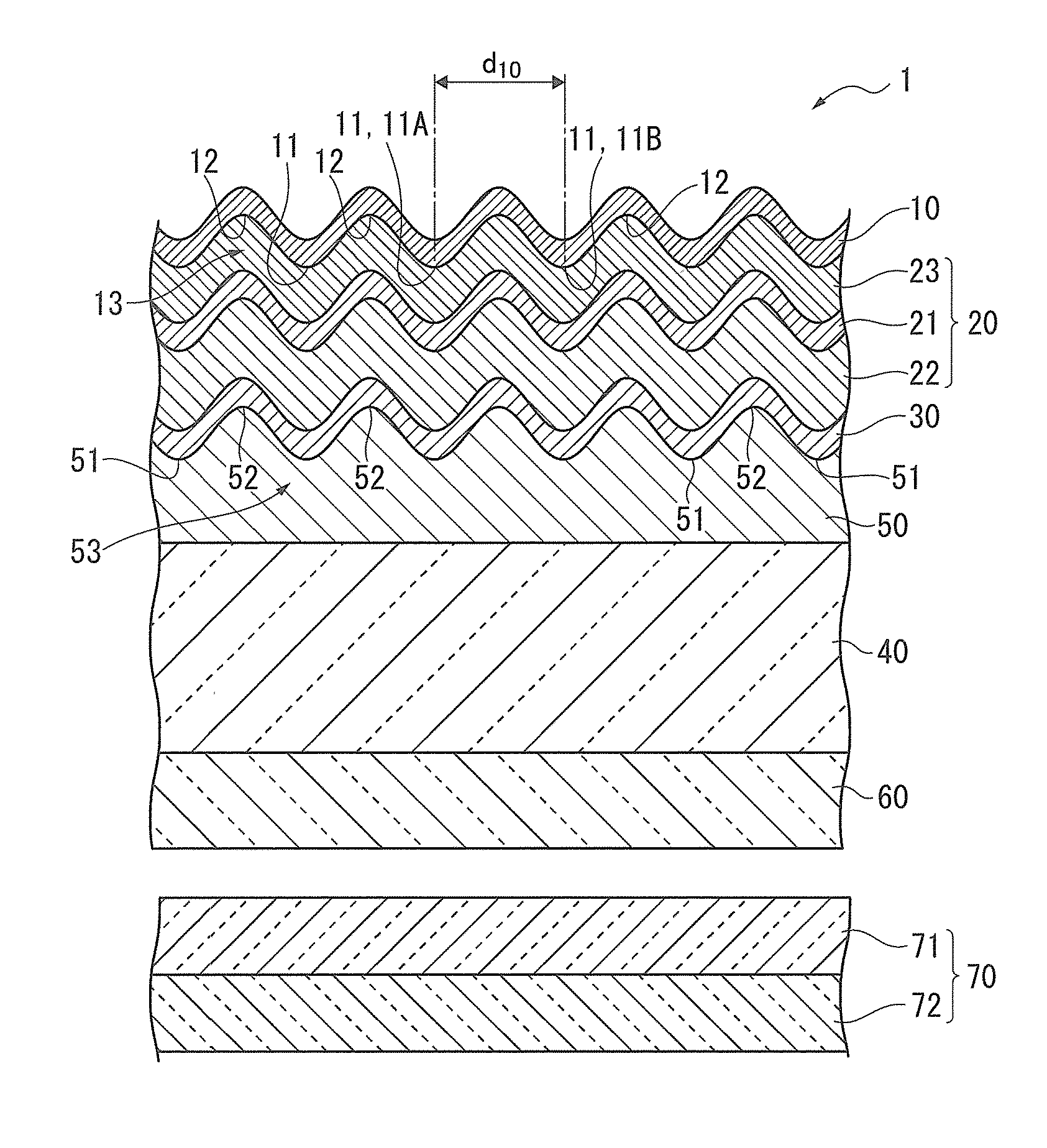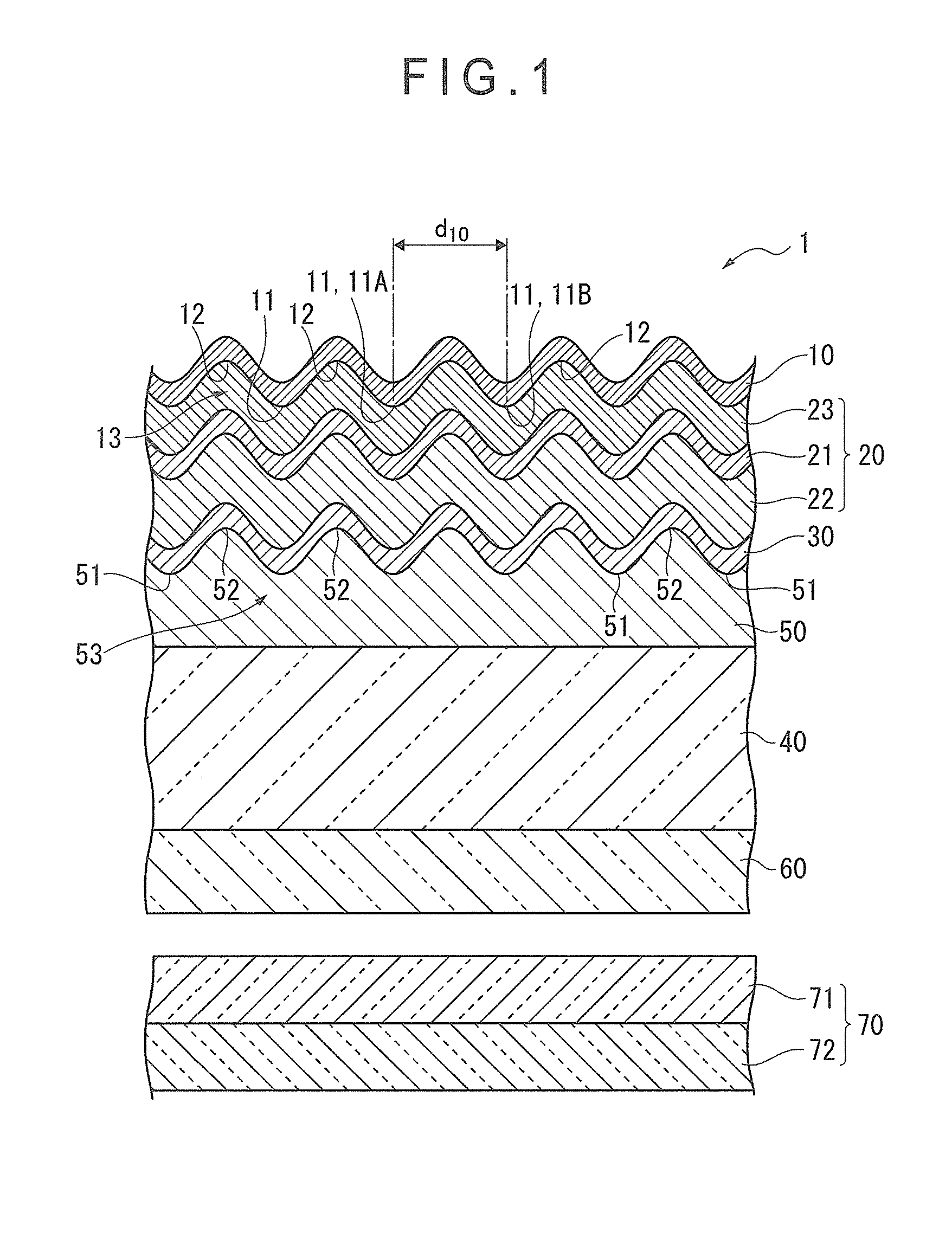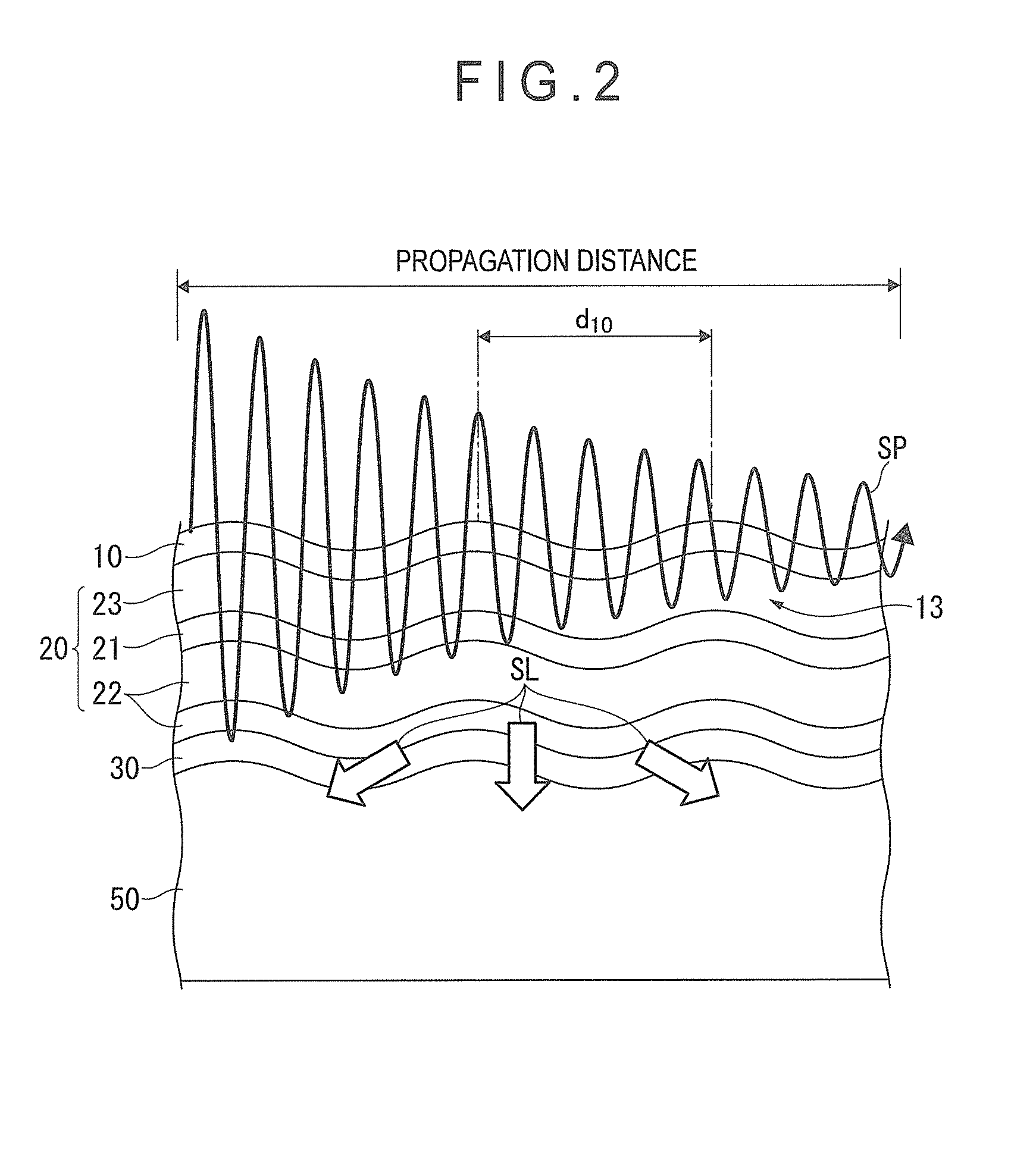Organic electroluminescent element and electronic instrument
- Summary
- Abstract
- Description
- Claims
- Application Information
AI Technical Summary
Benefits of technology
Problems solved by technology
Method used
Image
Examples
first exemplary embodiment
Advantages of First Exemplary Embodiment
[0094]According to the first exemplary embodiment as described above, the following advantages can be obtained.
[0095]In the organic EL device 1, the first electrode 10 has the second convexo-concave structure 13 at the interface with the second organic layer 23. The second convexo-concave structure 13 is shaped in a sine-wave curve or a curve represented by a sum of a plurality of sine waves having different amplitudes or angles. The second-convex-portion distance d10 of the second convexo-concave structure 13 is equal to or more than the peak wavelength of the light radiated from the emitting layer 21 and is equal to or less than the propagation distance (Lsp) of the surface plasmon at the interface between the first electrode 10 and the second organic layer 23.
[0096]According to the organic EL device 1 having the above arrangement, the light in the surface plasmon mode propagated in the in-plane direction of the organic EL device 1 is scatte...
second exemplary embodiment
[0101]Next, a second exemplary embodiment of the invention will be described.
[0102]In the description of the second exemplary embodiment, the same components as those in the first exemplary embodiment are denoted by the same reference signs and names to simplify or omit an explanation of the components. In the second exemplary embodiment, the same materials and compounds as described in the first exemplary embodiment are usable.
[0103]In the organic EL device 1 of the first exemplary embodiment, both of the first electrode 10 and the second electrode 30 have the above convexo-concave structure. However, in an organic EL device of the second exemplary embodiment, either one of the first electrode 10 and the second electrode 30 may have a convexo-concave structure.
[0104]In this arrangement, it is preferable that an electrode (the first electrode 10 in the second exemplary embodiment) in an opposite direction from an extraction direction of the light radiated from the emitting layer 21 ...
embodiment (
Modifications of Embodiment(s)
[0109]It should be noted that the invention is not limited to the above exemplary embodiment but may include any modification and improvement as long as such modification and improvement are compatible with the invention.
[0110]In the above exemplary embodiments, the organic EL device having the outer-light extraction layer 60 is described as an example, but the arrangement of the organic EL device is not limited thereto. For instance, the optical member 70 may be provided to an opposite surface of the light-transmissive substrate 40 from a surface thereof facing the inner-light extraction layer 50 without the outer-light extraction layer 60.
[0111]Moreover, in the above exemplary embodiments, the organic EL device having the optical member 70 is described as an example, but the arrangement of the organic EL device is not limited thereto. For instance, only the outer-light extraction layer 60 may be provided on the opposite surface of the light-transmissi...
PUM
 Login to View More
Login to View More Abstract
Description
Claims
Application Information
 Login to View More
Login to View More - R&D
- Intellectual Property
- Life Sciences
- Materials
- Tech Scout
- Unparalleled Data Quality
- Higher Quality Content
- 60% Fewer Hallucinations
Browse by: Latest US Patents, China's latest patents, Technical Efficacy Thesaurus, Application Domain, Technology Topic, Popular Technical Reports.
© 2025 PatSnap. All rights reserved.Legal|Privacy policy|Modern Slavery Act Transparency Statement|Sitemap|About US| Contact US: help@patsnap.com



